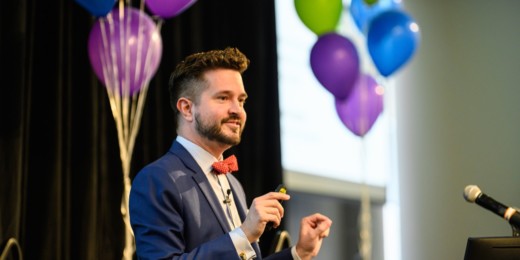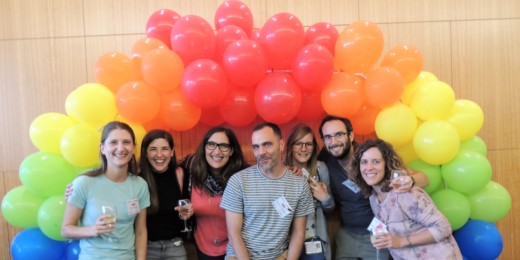Researchers at Stanford Medicine launched a new online course that aims to address a gap in medical education when it comes to LGBTQ+ health, which has historically focused on HIV and AIDS prevention and education, and has often misrepresented or ignored other needs of this patient population.
The interactive course, "Teaching LGBTQ+ Health," is co-led by Michael Gisondi, MD, vice chair of education for Stanford Department of Emergency Medicine; Timothy Keyes, a Stanford medical student; Shana Zucker, a Tulane medical student; and Delia Bumgardner, instructional designer for Stanford EdTech.
Gisondi spoke with me recently about the course and why the team has devoted nearly two years to the passion project.
Why is this course needed and who should take it?
I first learned about queer health not in medical school, but while volunteering at a gay and lesbian health clinic in Washington, D.C., in 1991. It was a different time. I remember being nervous about wearing an "Embrace Diversity" T-shirt from the clinic in public because it might generate a negative response.
None of the schools I attended offered training in LGBTQ+ health. The same was true for my current colleagues. Though they are compassionate, intelligent and dedicated physicians and nurses, they cannot teach what they do not know. Our medical students need to have this information.
The course is designed to teach physicians, nurses, pharmacists, social workers and advanced health providers and prepare them to teach others. But the material is suited for a broad audience, too. Patients and others who took the course have provided feedback about how it helped them learn more about the LGBTQ+ community.
What does the course cover that isn't traditionally covered in medical school?
For the LGBTQ+ population, patient access to health care and the quality of care received are impacted by language choice, discrimination, mental health concerns and other unique factors.
So the course covers LGBTQ+ health vocabulary -- terms such as gender, sexual orientation and queer -- social and behavioral determinants of queer health, and disease prevalence and prevention. It also teaches strategies for how to share the information taught in the class with others.
The idea is for health professionals to learn about caring for LGBTQ+ individuals in ways that are welcoming and sensitive to their health needs, concerns, and experiences, without assuming their concerns center on HIV and sexual health. A medical school curriculum that solely presents queer patients in the context of HIV/AIDS overlooks the reality that the LGBTQ+ community leads rich, happy lives.
We use animated and interactive case studies of bisexual, gay and non-binary gender patients to teach the best approaches to physical exams and health assessments for the LGBTQ+ population, as well as how to make clinical settings more welcoming and how to use appropriate pronouns.
How will you ensure that course material remains up-to-date ?
Timothy and Shana are founding members of the Medical Student Pride Alliance, a national organization that supports local medical school affinity groups, including our Stanford LGBTQ-Meds, a student led activist and social organization that raises awareness about queer health issues.
By collaborating with these organizations, we were able to partner with students from the alliance to review course content and offer feedback from the queer community. LGBTQ+ students served as voice actors for the many fictional patients in our clinical cases. The entire curriculum is evidence-based and representative of current norms in the LGBTQ+ community.
We plan to update the course's content and lessons every two to three years based on feedback about what resonated, what participants learned, what was missing, and how the process could be refined, among other things.
How did the course design and interactive elements develop?
Delia and Stanford EdTech were critical partners, and it became a passion project for their team. They brought our curriculum to life through storyboarding, character design, narrations and editing, and identified tools that would make the course interactive.
One of my favorite parts of the course is a mockup of a physician's office with different clickable hot spots -- when you click on things like the restroom or a magazine, you learn how to modify your office to create a more inclusive environment. All course assets, such as clinical cases and quizzes, are downloadable for educators to use.
What's next?
The course will soon be available on platforms such as Coursera and through the American Medical Association, translated into different languages, and disseminated as broadly as possible. I want to change the world with this course.
Photo by Мария Ежова






